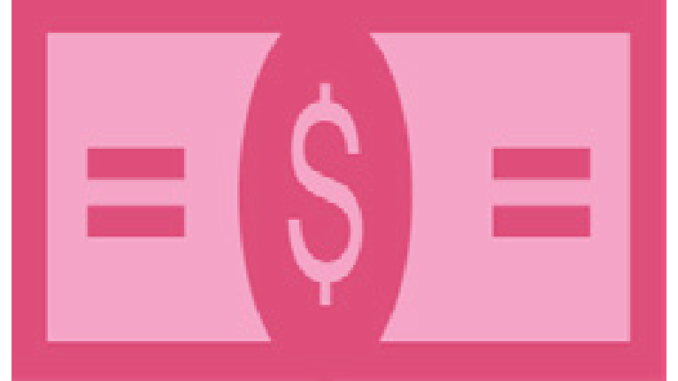
design: Natalia Favlia Inacua
The controversy of the overturning of Roe v. Wade this summer has brought light upon many other controversial women’s rights issues. Among these issues is the pink tax.
The pink tax has been harming women in the United States since 1994. The pink tax is the extra money that women have to pay for products, usually hygiene and toiletries.
It’s estimated that women spend over $1,300 annually more than men because of the pink tax. Women pay more for products 42 percent of the time compared to men’s 18 percent according to The Balance.com.
Overall, the pink tax is just unfair, and there is no reason why it should still exist. The pink tax makes women seem financially inferior to men, setting back tons of progress made in the fight for equal rights in the past few years.
But if the pink tax is so problematic, why is it so overlooked? Well, long story short women’s rights and inequalities have always been overlooked or even ignored.
One of the main things that the pink tax affects are the large difference in prices in hygiene products marketed for men versus women, with women’s products being the more expensive ones. Despite many of these items having the same production cost, women’s products are more expensive just because they are marketed for women.
For example, the average cost for shampoo and conditioner for women is $8.39 compared to men’s which is only $5.68, a 48 percent price difference, according to Business Insider.com. Other products with less significant price differences, include razors, razor cartridges, and lotion which all have 11 percent higher cost for women compared to men.
Even though recently many women have begun to speak out about the issue, for many the issue is still largely ignored. This is because of the connotation that women’s menstrual products have in the United States.
Talking about menstruating and feminine hygiene has always been considered largely taboo in the United States. Women have been encouraged to avoid talking about their biological functions because people around them, mainly men, were never educated on women’s bodies and therefore felt uncomfortable hearing about the things women need to keep themselves clean.
The sad reality is that because of this, women are just stereotypically expected to be born clean and pretty, an unrealistic standard that no one would ever be able to meet, making it hard for them even to bring up issues about their own hygiene. Yet, despite these negative stereotypes and taboo, more women have begun to speak out against the injustice that is the pink tax.
Women in New York especially have stood up against the pink tax, and succeeded. As of Sept. 30 New York governor at the time Andrew Cuomo set a ban of the pink tax into effect. The ban prohibits goods that are marketed to different genders from having different pricing; this goes for services as well, not just goods, according to wkbw.com.
This ban actual proof that speaking out against injustices in one’s world actually promotes change. Reach out to representatives and encourage them to ban the pink tax as well, because so far, only New York has officially banned it.
Here in Ohio, reach out to local and state officials such as State Representative Kris Jordan and Gov. Mike DeWine. Another thing to do is call brands in which there is evidence of the pink tax and encourage them to modernize in the name of justice for women.


